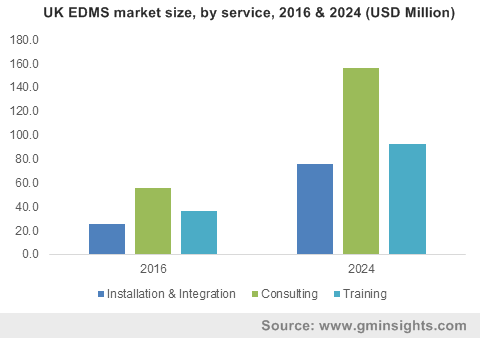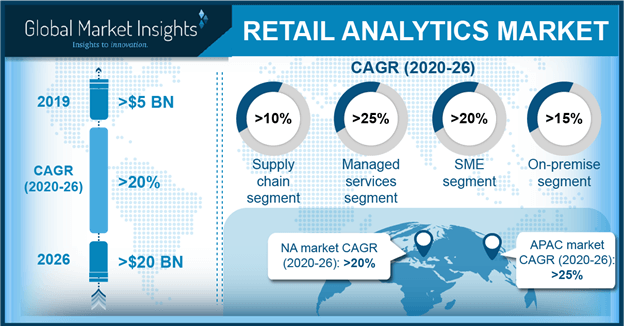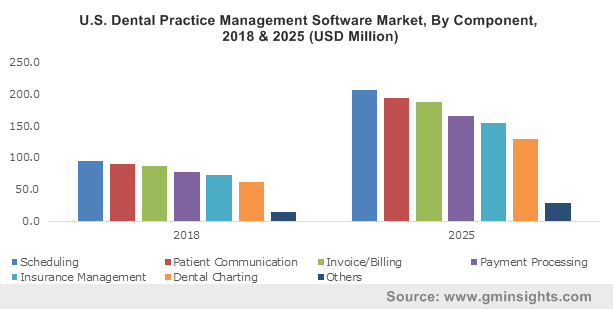Cloud-Based
Electronic document management system market to register a double-digit growth rate over 2017-2024, driven by extensive product demand for cybersecurity applications
UK EDMS market size, by service, 2016 & 2024 (USD Million)

With the implementation of data management systems, many companies have successfully overcome security breaches – a factor that will further stimulate electronic document management system industry size. For instance, in 2014, oil and gas industries across the United States witnessed a series of high-profile accidents, for which the NTSB (National Transportation Safety Board) had been summoned to undertake a study for minimizing any such occurrences in the future. NTSB then found that seven out of 33 findings were data management issues. In this regard, NTSB had framed regulatory guidelines to minimize the possible safety threats from data breaches. In order to comply with regulatory norms, several giants in O&G sector eventually deployed EDM systems on large scale, which has stimulated electronic document management system market size.
Get a Sample Copy of this Report:@ https://www.gminsights.com/request-sample/detail/2265
The evaluation of EDMS i.e. collection of various technologies that work combinedly to supply comprehensive solution to manage indexing, creation, retrieval, capture, and information assets of companies has eliminated unnecessary procedures in the organizational progress. The rising adoption of EDMS in the industrial sectors to achieve high operational excellence is thus likely to propel electronic document management system market. A few months before, the renowned chemical manufacturer, DOW chemical selected one of the key players in electronic document management system market, Synergis Software to deploy the Adept EIM (Engineering Information Management) solution. The main aim behind the deployment of this advanced system was to provide quick access to capital engineering project documents, enhance global collaboration, and support fast post-project data handover. Before the deployment of EDMS, Dow Chemical had at least 20 different kinds of information management systems to process nearly 3 million documents. After the implementation of EDMS however, Dow Chemical has successfully reduced the risk associated with data management with highly reliable and intuitive solutions. The growing adoption of EDMS is thus heavily influencing electronic document management industry share.
Owing to their efficiency and productivity, EDM systems play a vital role in cybersecurity. The document management systems enable user to access cybersecurity tools for overcoming data leak risks. The surging deployment of EDMS across various industrial sectors to preserve the consumer’s rights and to prohibit leaks is essentially what will drive electronic document management system industry trends over the years ahead. In addition to this, healthcare facility providers are also utilizing document management systems to provide better medical care solutions to their patients. Endowed with a significantly widespread application spectrum, electronic document management system industry outlook is likely to witness a dynamic transformation in the years ahead.
Author Name : Sunil Hebbalkar
Top 2 trends prevalent in retail analytics market: Harnessing IoT and big data to revolutionize the retail fraternity
One of the latest trends proliferating retail analytics market is that of multiple operational channels. Or, as the experts say so – omni-channels. The technique has brought about a modest amount of consolidation in retail analytics industry, surreptitiously eliminating supply chain chaos and location glitches. While global markets have been attempting to emulate high-grade technology and big data analytics, the retail sector has quietly been engaging with omni-channels to entice more customers, keep them continually engaged, draw data from a stream of sources, and bring about extensive social engagement to trigger a better understanding among consumers regarding the distribution chain. This initiative fosters the deployment of efficient analytics, which will ultimately usher in a new dawn for retail analytics market. The extensive reach of the retail business, in conjunction with the steadfastly developing e-commerce sector, is also certain to act as a catalyst to Retail Analytics Market, which, as per experts, is forecast to cross a valuation of USD 13 billion by 2024.
U.S. Retail Analytics Market Size, By Function, 2016 & 2024 ($Mn)

Retail analytics is essentially the process of delivering critical insights about a myriad range of retail verticals such as supply chain models, distribution chain, inventory levels, sales, and consumer demand, that form the crux of making crucial decisions, In a nutshell, retail analytics industry encompasses an enormous scope, given the fact that the deployment of data analytics in the retail market gives companies an inherent overview of business, processes, and customer insights, thereby opening up the channels for improvement and progress. IBM’s recent partnership with SAP for jointly developing data solutions for the retail sphere is an instance of how companies have been forging partnerships to lead retail analytics market on the path of progress.
Top trends underlining retail analytics market:
Cross-platform analytics
With the retail space spread across numerous distribution channels, the onus is on big data analytics solutions to track data as minutely as possible. Consumers may use one or more channels to view a product and make an informed choice. Analytic solutions need to able to penetrate this barrier and unearth the audiences through all these platforms in order that retail giants are able to provide a seamless shopping experience.
The extensive demand for real-time data to be communicated across the value chain – sales staff, consumers, distributors, and the like will thus, prompt retail analytics market players to come up with a range of effective solutions. Lately, the proliferation of technology has led to the massive deployment of both on-premise and cloud-based solutions, which will eventually result in the development of retail analytics market.
Get a Sample Copy of this Report@ https://www.gminsights.com/request-sample/detail/319
The proliferation of IoT
IoT is the latest incantation being followed by major giants partaking in retail analytics industry share. With the retail sector, consumer is king, and high-grade consumer experience can only be obtained via the deployment of IoT and augmented reality. The former in fact, is nearly on the verge of encapsulating retail analytics market. If estimates are to be believed, retailers may spend more than USD 2 billion on IoT-enabled devices by 2020. Furthermore, more than 65% retailers will depict an earnestness to integrate connected devices in their business models – a fact which may transform the face of retail analytics market.
The deployment of IoT has a plethora of benefits to offer, right from efficient data collection, consumer movement monitoring, real-time supply and demand analysis, and so on. Considering the vast expanse of the retail sector and the intense competitive aura that permeates this space, it is certain that the adoption of connected technology will augment retail analytics market.
An inherent shift of dynamics has been observed in the deployment of predictive analytics lately. This type of analytics basically entails guesswork regarding consumer behavior and choices and has proved to be fairly successful in retail analytics industry, in the initial years of inception. With the passage of time however, the need for a more efficient, practiced methodology arose in retail analytics market, which resulted in the genesis of an explanatory business model. This type of analytics gives an extended explanation of data – inventory requirement, store requirements, consumer demand, and product trends -in other words, this type of analytics identifies trends that may have a sizable impact, which is a godsend in retail analytics market.
What can be deduced from this transformative trend is that the retail sector has been on the lookout for novel technologies to forge a connection with consumers. In order to be a part of this ever-changing spectrum, it is essential for retailers to bring about a change in their outlook to create value. This modified school of thought is certain to usher in a unique speculation of sorts for retail analytics market giants, who have been bending over backwards to codify a new set of advanced solutions for the retail sector. Inadvertently, it is expected that their efforts will bear fruit, and retail analytics market will establish new frontiers of growth in the years ahead.
Author Name : Saipriya Iyer
How will DPMS market share be characterized by the rising deployment of the cloud over 2019-2025?
With the increased emphasis on customer satisfaction and operational efficiency, dental practice management software (DPMS) market stands as one of the most pivotal verticals of the healthcare industry. The business crossed a billion-dollar benchmark in 2017, with a large-scale adoption of the revolutionary tool by individual professionals as well as multi-purpose clinics. The fraternity is extensively characterized by swift innovations in technology focused on balancing the customer service aspect of dental practices and developing optimum treatment mix have.
Booking appointments and scheduling, cancellation, reminders, billing and insurance management are some fundamental patient-centric elements of DPMS, with added features like easy access to patient records and dental images that make client servicing simpler for dentists. Further, the worldwide trend towards digitization and availability of cost-effective cloud based solutions have propelled dental practice management software market share worldwide.
U.S. Dental Practice Management Software Market, By Component, 2018 & 2025 (USD Million)

Evolving lifestyles around the world have affected the general health of people and escalated the dental problems across varied demographics. Subsequently, the growing awareness regarding oral hygiene has boosted the dental industry and immensely enhanced dental practice management software market share. A striking factor influencing the industry is the rising geriatric population which is experiencing oral disorders like gum disease, cavities, tooth decay and tooth loss more frequently.
Statistics released by the World Health Organization indicate that the global population of people with aged 60 and above will virtually double from 900 million in 2015 to nearly 2 billion in 2050. As older people are more susceptible to dental problems, the projected increase of elderly population indicates a lucrative future for the dental practice management software industry.
The development of DPMS industry is continuously being supported by huge venture capital investments and technology-friendly initiatives by governments. Recently, a prominent dental practice management platform, iDentalSoft received considerable investment through a new round of funding led by FCA Venture Partners. iDentalSoft, formed in California, is a secure cloud-based DPMS platform that assists in improving clinical efficiency, streamline workflow and optimize production. It allows fast access to patient schedules, details, treatment plans, x-rays, billing and credit card payments among other tools, displaying the tremendous utility of DPMS in reducing the administrative workload of dentists.
Get a Sample Copy of this Report:@ https://www.gminsights.com/request-sample/detail/463
Investment activities of such nature have enabled the influx of innovations in the industry fueled by the government mandates, like the Health Information Technology for Economic and Clinical Health Act (HITECH Act) introduced by the U.S. The act encourages expansion of healthcare IT infrastructure and has subsequently helped augment the dental practice management software market share in the U.S.
Being one of the most technologically advanced countries, the U.S. has been a vital base for startup companies that want to design DPMS products. Owing to the cutting-edge healthcare services provided in the country and increasing geriatric populace with dental ailments, the U.S. dominated the dental practice management software market with a share of 39%. As the software adoption rates continue to soar and the healthcare IT industry expands, U.S. dental practice management software market will showcase its dominance over 2019-2025.
Speaking of enhanced DPMS, it is necessary to consider its assistance in bearing the security aspect of a dental practice, as numerous government health agencies have specific legislations for data protection. For instance, Ontario’s Personal Health Information Protection Act requires data storage facilities to be locked with limited and authorized access using ID cards. As such, the latest services in the dental practice management software industry are generally cloud-based, where a physical server is not required to be present at the practice. A cloud server enables automatic data backup and protection, and its lifetime cost is considerably lower than a complete desktop system that requires timely maintenance with essential features to be added separately.
With the mounting pressure on businesses all over to adopt secure modes of information storage due to risk of data corruption and loss, integration of cloud services in DPMS reduces the legal obligations of dental practices and the high cost that comes with it. Not to mention the incredible upsurge in the use of smartphones has permitted patients a faster and easy mode to select their choice of clinic and browse treatments, book appointments and even review the practice post-treatment. The affluence of customers on the reputation of dental practices and the speed at which they expect the services has magnified the industry’s competitiveness, bolstering the cloud-based dental practice management software market share.
All in all, the rapid progression in cloud technology, convenience of smart devices in the hands of patients and the shifting customer preference towards better service quality has endlessly changed the dentistry landscape. Key market contributors like Patterson Dental, Henry Schein, Carestream Dental, Bestosys, Open Dental Supply amongst others have established their presence with prolific DPMS products. Constant evolution of software capabilities combined with the awareness pertaining to their benefits in patient-care and servicing are expected to catapult the dental practice management software market share in the years to come.
Author Name : Pankaj Singh
